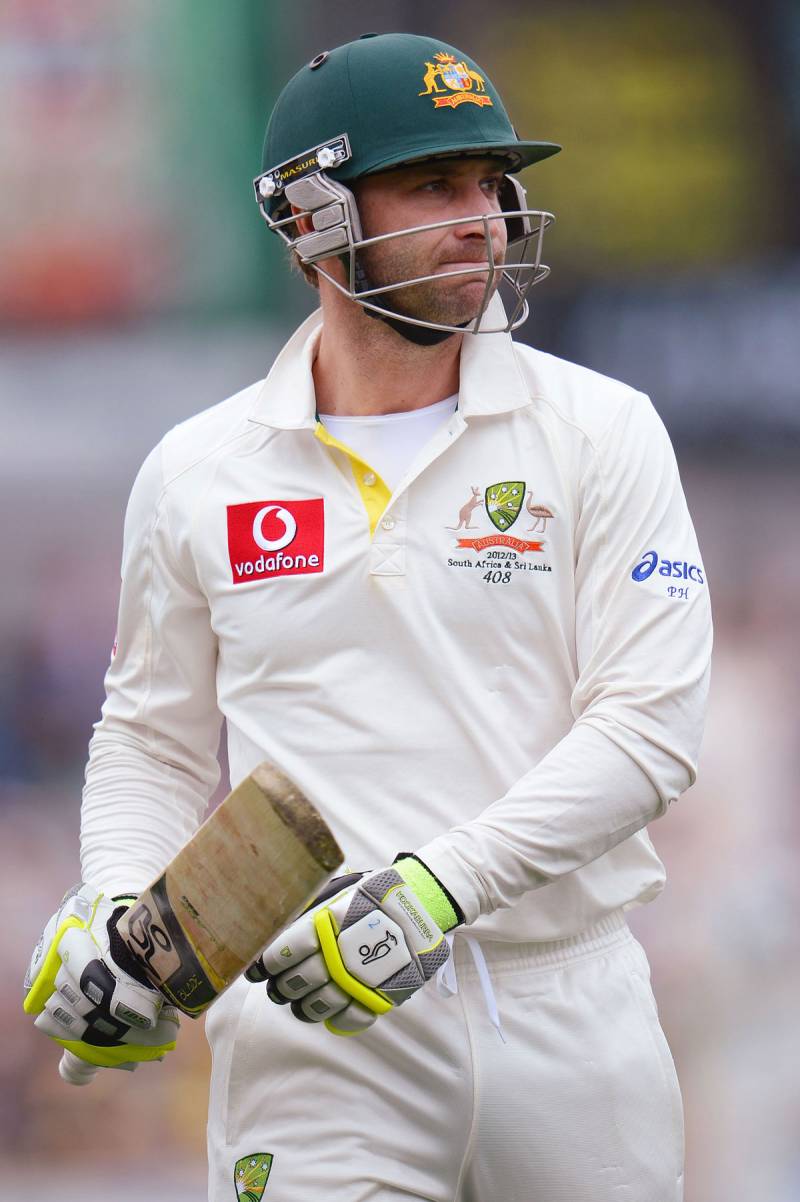SYDNEY - On the first anniversary of the tragic death of Australian batsman Phillip Hughes, questions are being asked about safety — and the new pink ball being used at this week’s historic day-night Test.
Hughes, who played 26 Tests, died from bleeding on the brain on November 27 last year after being hit on the base of the skull by a rising ball at the Sydney Cricket Ground during a domestic match. His death — a freak accident — stunned Australia and the world cricketcommunity, sparking an outpouring of grief.
While Cricket Australia immediately boosted the medical presence at grounds and now requires all players to wear a helmet that meets stringent safety standards, Hughes’ long-time coach and mentor Neil D’Costa said he was still not convinced it was enough. “Safety is our absolute top priority and I’m not sure we’re doing everything humanly possible to honour Phillip’s memory,” he told Thursday’s Sydney Morning Herald. “You can erect plaques, and that’s all nice, but when it’s said and done, are we doing everything we can to make sure it doesn’t happen again to someone’s child?”
The anniversary of Hughes’ death on Friday coincides with the start of the first day-night Test between Australia and New Zealand in Adelaide — featuring a new pink ball, which can generate extra swing at night. D’Costa warned the situation could pose safety problems, especially with bowlers like Mitchell Starc, who clocked the fastest ball in Test history during the second Test in Perth. “If a team would forego runs to declare and take that condition (extra swing at night) and see that as an advantage to win the game, you have to think it’s a bit extreme,” D’Costa said. “They wouldn’t want to see someone get hit with that pink ball at dusk on international television. They’re facing the fastest bowler in the world now — it should mean something.”
Former Australian opener Chris Rogers, who retired following the recent Ashes series after ongoing symptoms of concussion, said the clip-on neck guard should be made mandatory in all helmet designs to counter the risk. “The introduction of the neck guard, I think that has been quite big so I do think it should be made compulsory,” he told the newspaper. “A lot of guys might not feel comfortable wearing it initially, but it’s for the safety of everyone. The laws could be tougher and more stringent.”
However, former Test wicketkeeper Brad Haddin, who was behind the stumps when Hughes was struck, said sufficient changes to safety have been made since the accident. “I think Cricket Australia have gone over and beyond to do everything they possibly can in this space so something like this freak accident doesn’t happen again,” Haddin told Sky Sports Radio.
Highlighting the risks, Mitchell Marsh was visibly rattled after a ball he hit under lights at training in Adelaide on Wednesday caught a young net bowler on the head. The youth was not seriously hurt. Hughes’ family have asked for a low-key anniversary. He will be honoured in Adelaide by players from both sides wearing black armbands, while during the first adjournment a tribute package will be screened at 4:08 pm — referring to his Test cap number. “It’s going to be a really tough day and I think the guys playing are going to do it tough,” former Australian captain Michael Clarke, a close friend of Hughes who was a pallbearer at his funeral, told reporters.
Current captain Steve Smith said his team would play with smiles on their faces. “I think for us now a year on we still have Hughesy in the back of our minds every time we walk out on the field,” he said. “We are going to do our best to play with a smile on our face and hopefully play well for Hughesy.” Hughes’ death is the subject of a New South Wales coronial inquiry, and a separate Cricket Australia review into the causes and circumstances. Both are yet to release findings.
Australian team doctor Peter Brukner said in the wake of the accident that Hughes died from an injury to the neck that caused a haemorrhage in the brain, adding that it was “incredibly rare”.
Friday, April 19, 2024
Safety in focus, one year after Hughes tragedy

AIOU extends date for BS programmes admission
April 19, 2024
Maximum health facilities for prisoners ordered
April 19, 2024
Teenage stabbed to death in Faisalabad
April 19, 2024
11 booked for demolishing graves
April 19, 2024
A Tense Neighbourhood
April 19, 2024
Dubai Underwater
April 19, 2024
X Debate Continues
April 19, 2024
Hepatitis Challenge
April 18, 2024
IMF Predictions
April 18, 2024
Kite tragedy
April 19, 2024
Discipline dilemma
April 19, 2024
Urgent plea
April 19, 2024
Justice denied
April 18, 2024
AI dilemmas unveiled
April 18, 2024
ePaper - Nawaiwaqt
Advertisement
Nawaiwaqt Group | Copyright © 2024





